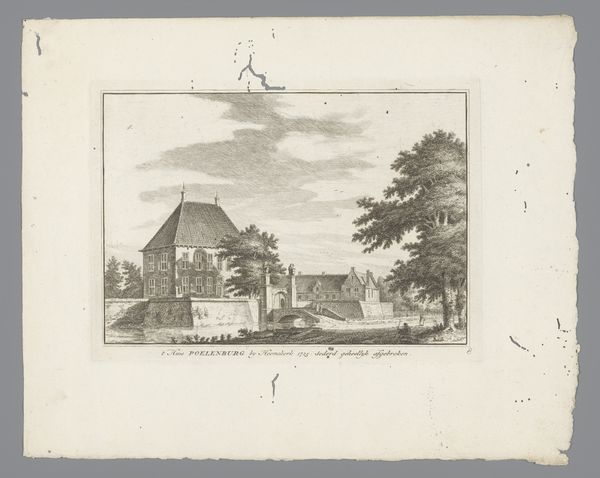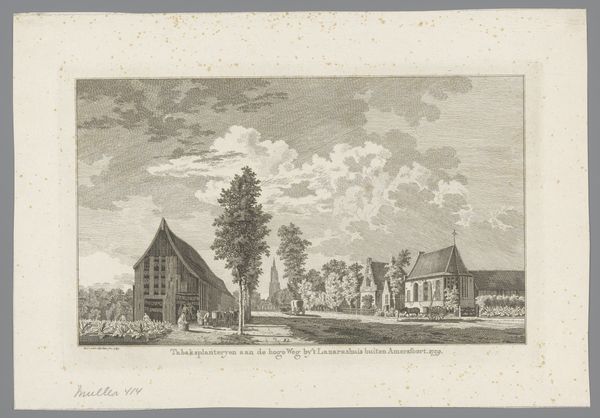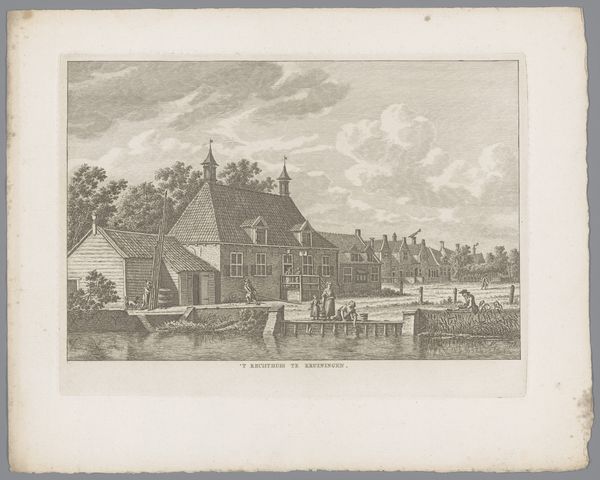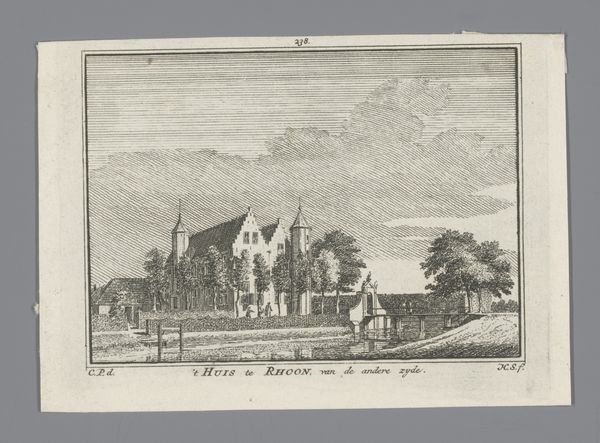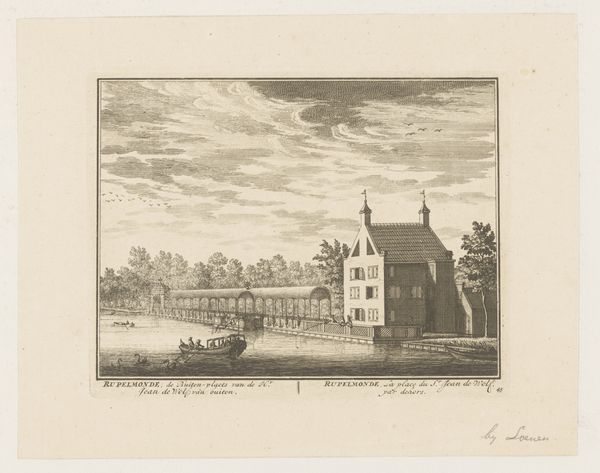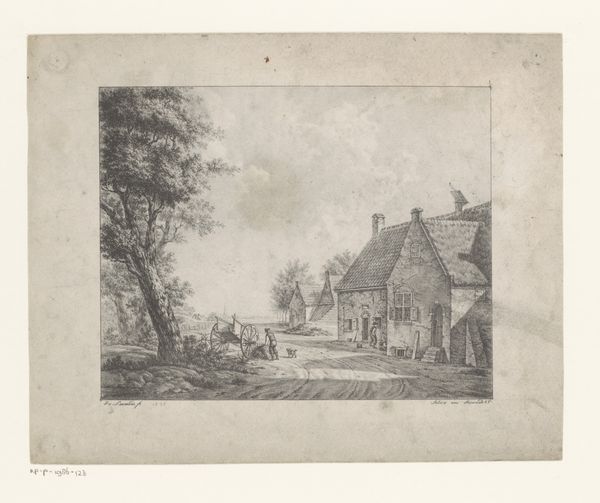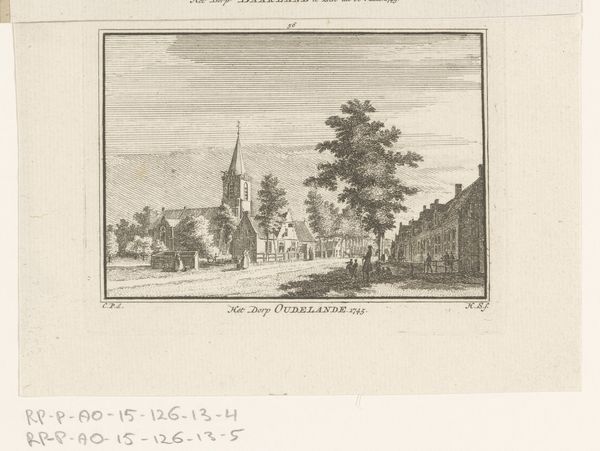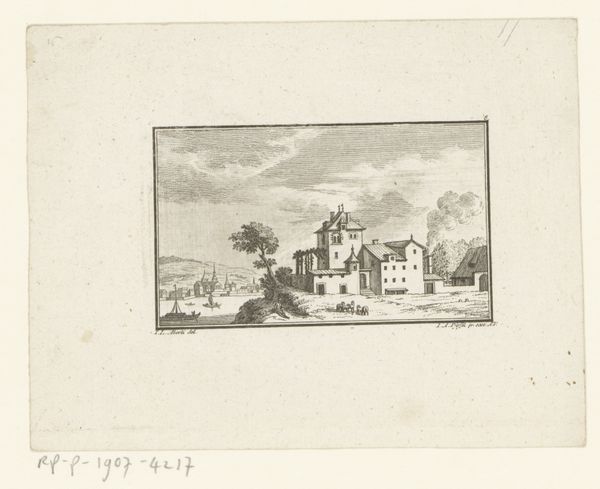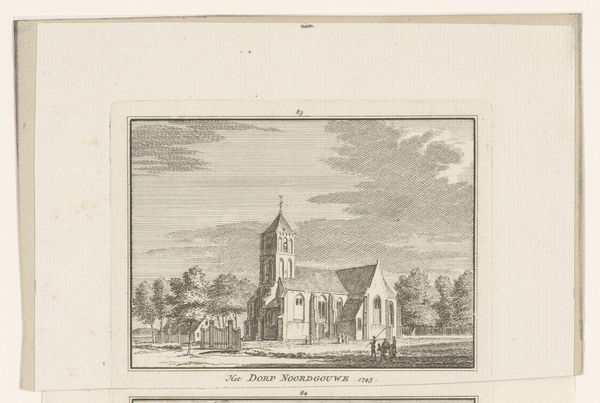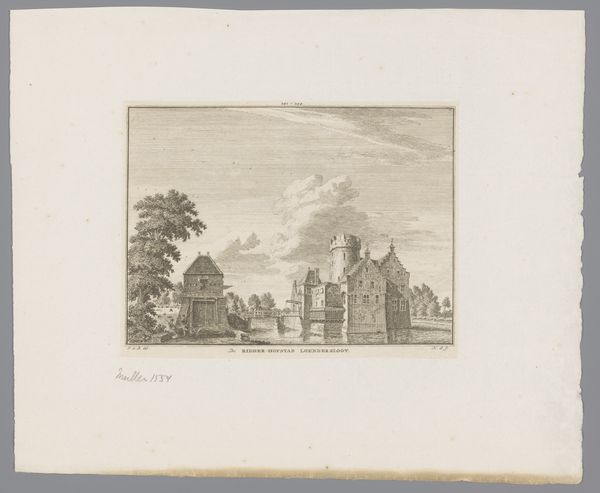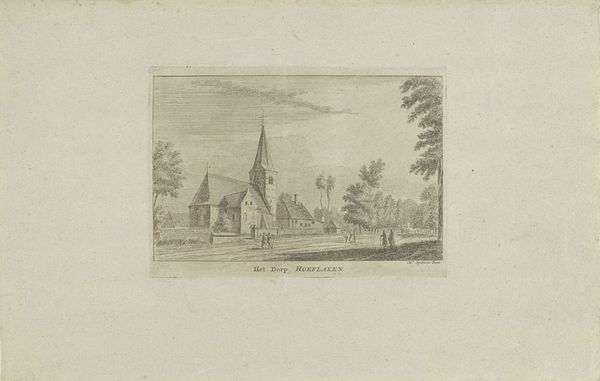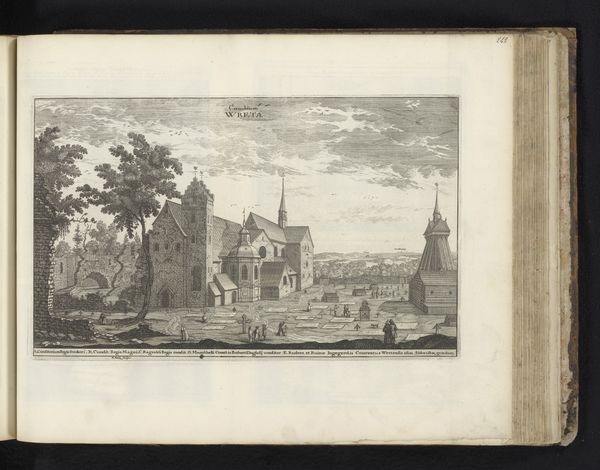
print, engraving
#
baroque
#
ink paper printed
# print
#
old engraving style
#
landscape
#
cityscape
#
engraving
Dimensions: height 96 mm, width 105 mm
Copyright: Rijks Museum: Open Domain
This print, *Gezicht op Twisk*, was made in 1726 by Hendrik Spilman. It is an etching, a printmaking technique with a long history, dating back to the late middle ages. To make an etching, a metal plate, usually copper, is coated in a waxy, acid-resistant substance called a ‘ground.’ The artist then scratches their design into the ground with a needle, exposing the metal beneath. When the plate is immersed in acid, the exposed lines are ‘bitten’ or etched into the surface. By carefully controlling the depth of these lines, and then inking the plate, the artist can create prints with rich tonal variation. The texture of the etching is crucial to its effect. The crisp, precise lines lend a sense of clarity to the scene, typical of Dutch landscape art from this period. Yet, the density of the mark-making also provides a contrast, suggesting a place of humble labor, and everyday life. Ultimately, the print is more than just a picture. It's a record of skillful making, inviting us to reflect on the history of craft and its connection to the places and people it represents.
Comments
No comments
Be the first to comment and join the conversation on the ultimate creative platform.
